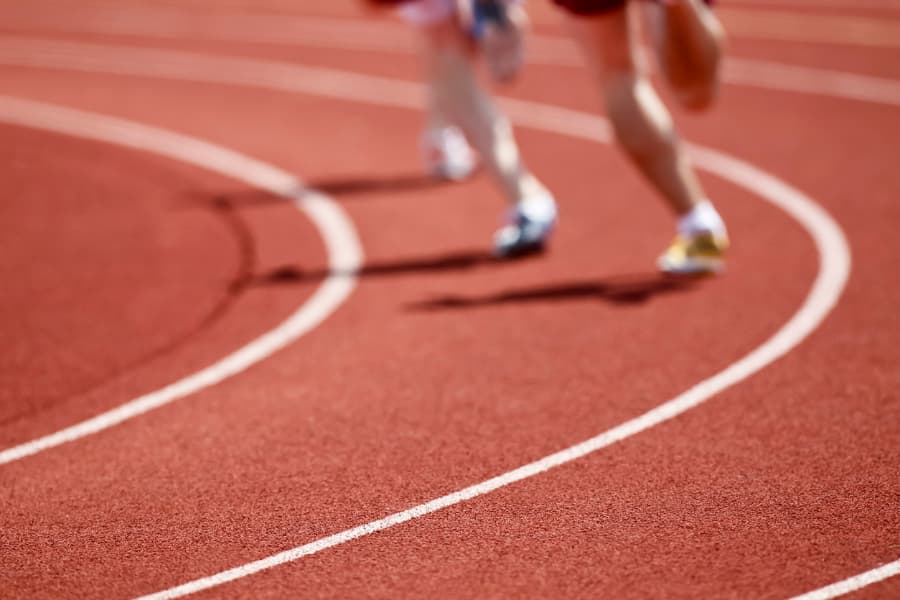
Factors That Dictate Faster Run Times
Several aspects play a role in what makes some track surfaces produce faster running times. Because not every surface is designed the same, athletes might see their times vary depending on the running track. Factors that may determine run times include:Ground Contact Time
Instead of making you faster, some track surfaces slow you down by increasing ground contact time. What this means is a runner’s foot remains in contact with the ground for longer than it would on other surfaces, causing them to run slower.
Softer surfaces that have slightly more give, such as clay and cinder running tracks, are known to increase ground contact time. Differences in ground contact may be hard to notice while running, but they can certainly make a large impact on overall run times.
Shock Absorption
Another component in figuring out how much a running surface affects overall speed is the amount of shock it absorbs from a runner’s strides. Surfaces that absorb a substantial amount of shock from runners are often softer, while running track surfaces that absorb very little shock are generally firmer, such as concrete and asphalt.
Texture
The texture of a running track surface can also play a role in how fast it enables athletes to run. Generally, surfaces that offer more texture, such as rough-textured concrete and synthetic running track surfaces, provide a better grip. This added grip allows runners to stabilize their bodies much quicker and gives them sufficient friction to make their next stride faster, resulting in improved run times.
Which Running Track Surfaces Are Faster?
When looking for a track surface that can optimize a runner’s potential and produce faster run times, athletic directors and facility managers should consider harder running track surfaces. Surfaces like asphalt and synthetic are sturdy enough to minimize shock absorption and ground contact time but also feature enough texture to provide runners with sufficient grip. These conditions are why some runners may feel they perform better when running on these types of surfaces.What Else To Consider
For those in charge of athletic facilities, speed and performance are not the only aspects to consider when selecting a running track sport surface. You should also take the following into account:- Safety: All track surfaces should be safe for running to help prevent athletic injuries.
- Durability: The more durable a running track surface is, the longer it will last.
- Maintenance: Proper upkeep is required to help ensure running track surfaces stay safe and operable for as long as possible.


